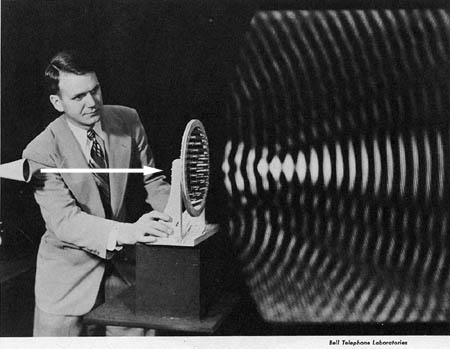256a-fall-2022/hw2
From CCRMA Wiki
Contents
Homework #2: Sound Peeking
Due Dates
- HW2 milestone 1: due Friday (10/7, 6pm): all three initial tutorials completed; HW2 webpage with progress report on learning/playing with Chunity + 2-3 brainstorm ideas
- HW2 milestone 2: due Monday (10/17, 1pm): HW2 webpage updated with milestone video + in-class critique
- HW2 final deliverable: due Monday (10/24, 1pm) HW2 final webpage/video + in-class presentation
reminder: please also organize your weekly reading responses online at http://ccrma.stanford.edu/~YOURID/256a/rrXXX/) -- replace XXX with the number of of the reading response.
In this assignment, you are to visualize sound in real-time, using Unity for the graphics programming, and ChucK (via Chunity) as a sound source. Your program will visualize: 1) live microphone input and 2) a designed sound narrative written in ChucK. This is a fun project but there are many moving parts; start early.
Specification (part 1a of 3): Tutorials + Readings
- follow and do the Unity Roll-a-Ball tutorial in a new project
- next (in the same project), follow and do the Chunity tutorials
- download and play with sndpeek for ideas
- Artful Design chapter 2 reading response (and Aaru video viewing; see https://ccrma.stanford.edu/courses/256a/docs/reading-responses.pdf): due Sunday (10/9) 11:59pm
- Artful Design chapter 3 reading response: due Sunday (10/16) 11:59pm
Specification (part 1b of 3): Real-time Sound Input in Unity
- follow and do Ge and Kunwoo's Artful Design TV tutorial "HelloAudioVisualizer" in a new project (do Roll-a-Ball and Chunity tutorials first)
- note: the above tutorial does not use Chunity! Use the starter code in the next step to set up your project
- start working on your own visualizer in a new project using the ChunityAudioVisualizer starter code => Unity Package | scripts only
- end up with a usable Unity project as a starting point for your project
- basic visualization of time-domain waveform and magnitude spectrum
- test using the microphone input!
Specification (part 2 of 3): Visualizing the Spectrum History
- design and implement a waterfall plot (like sndpeek), a real-time scrolling spectrogram, or another way to display spectrums over time
- "make it read"!
- feel free to experiment on how to represent the spectrum history visually
Specification (part 3 of 3): An Audio-Visual Narrative
- using Chunity, create a ChucK program to run inside your visualizer
- can use a combination of microphone (adc in ChucK) and sound synthesis
- think about different "sections" or "movements", and how to transition between them
- try to align the aesthetic of your visualizer and your ChucK program (give it personality)
- (optional): can use keyboard input
- aesthetic goal:
- polish not important!
- technical fanciness not important!
- making the viewer/listener feel something: important!!
Note
- have fun with it!!!
- comment your code!
- you are welcome to work together, but you must do/turn in your own work
Final Deliverables
- 0) reading responses, to Chapters 2 and 3 (upload URL to Canvas, as per usual)
- 1) HW2 project webpage (should be viewable at http://ccrma.stanford.edu/~YOURID/256a/hw2/). It should include:
- a name and description of your audio visualizer
- a few screenshots that capture various parts of your visualizer in action
- a polished high-resolution video (2-3 minutes, with audio, screen capture or with camera) of both your visualizer in action AND your narrative
- hint: create a production build from Unity and capture video + audio using this build in FULL-SCREEN
- upload to YouTube or Vimeo (or CCRMA) and embed the video from your webpage
- instructions for using your visualizers, including any keyboard/mouse control
- the production build of your visualizer (please specify the platform e.g., MacOS, Windows, or Linux)
- your Unity project (stripped of unnecessary and intermediate files; just the essentials needed to build and run the project)
- a final short text section that:
- conveys your ideas/comments in constructing each program
- describes any difficulties you encountered in the process
- acknowledges help you received for this project
- feel free to include (or not include) your previous HW2 milestones. If you do, these previous milestones should appear AT THE BOTTOM of your HW2 webpage.
- 2) submit to Canvas: URL to webpage and your Chunity code.
